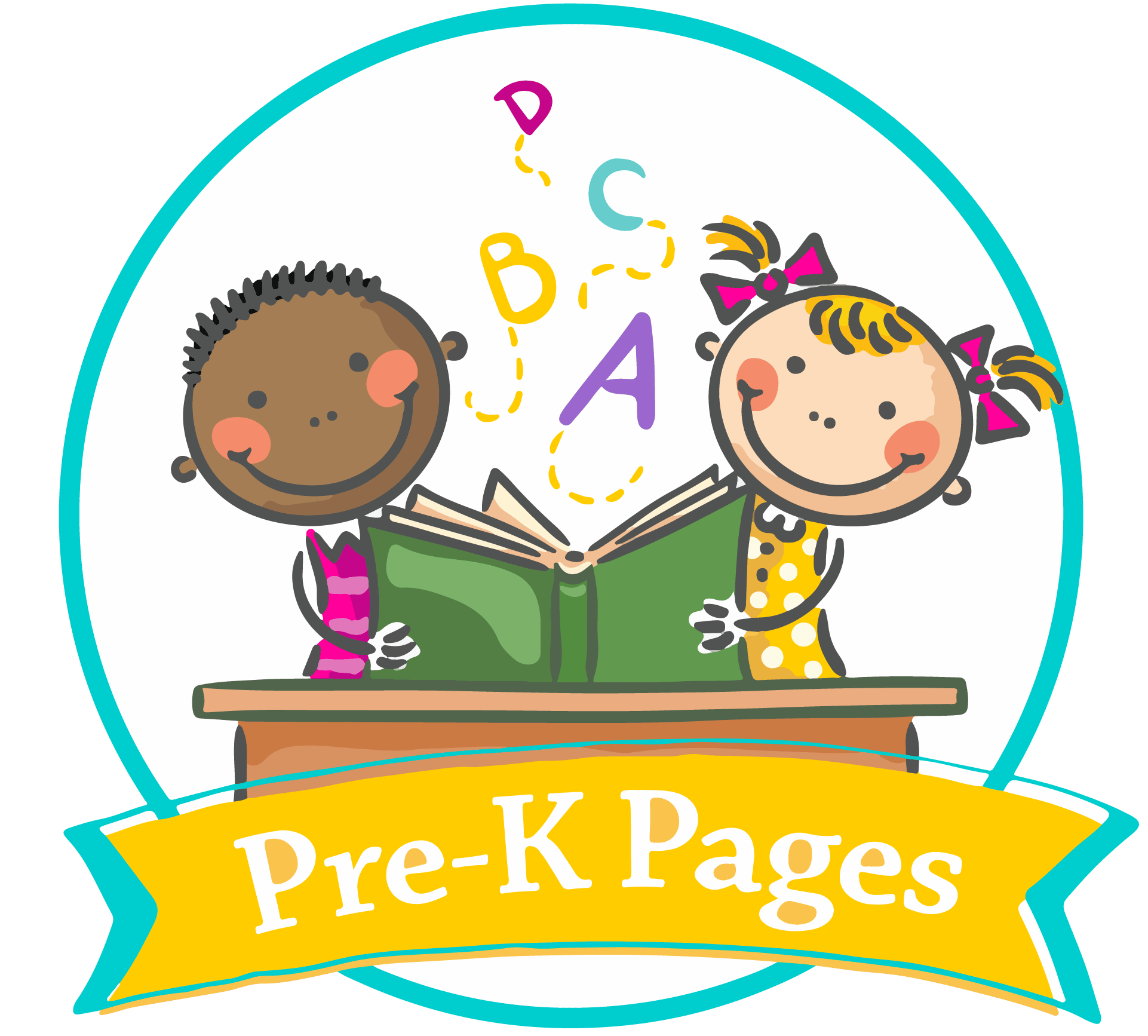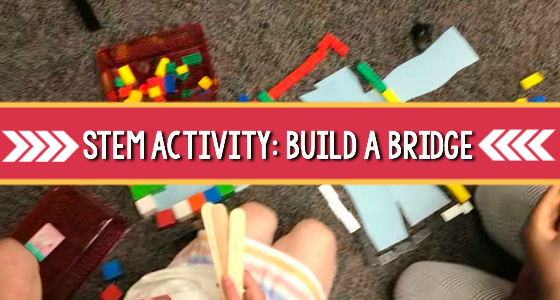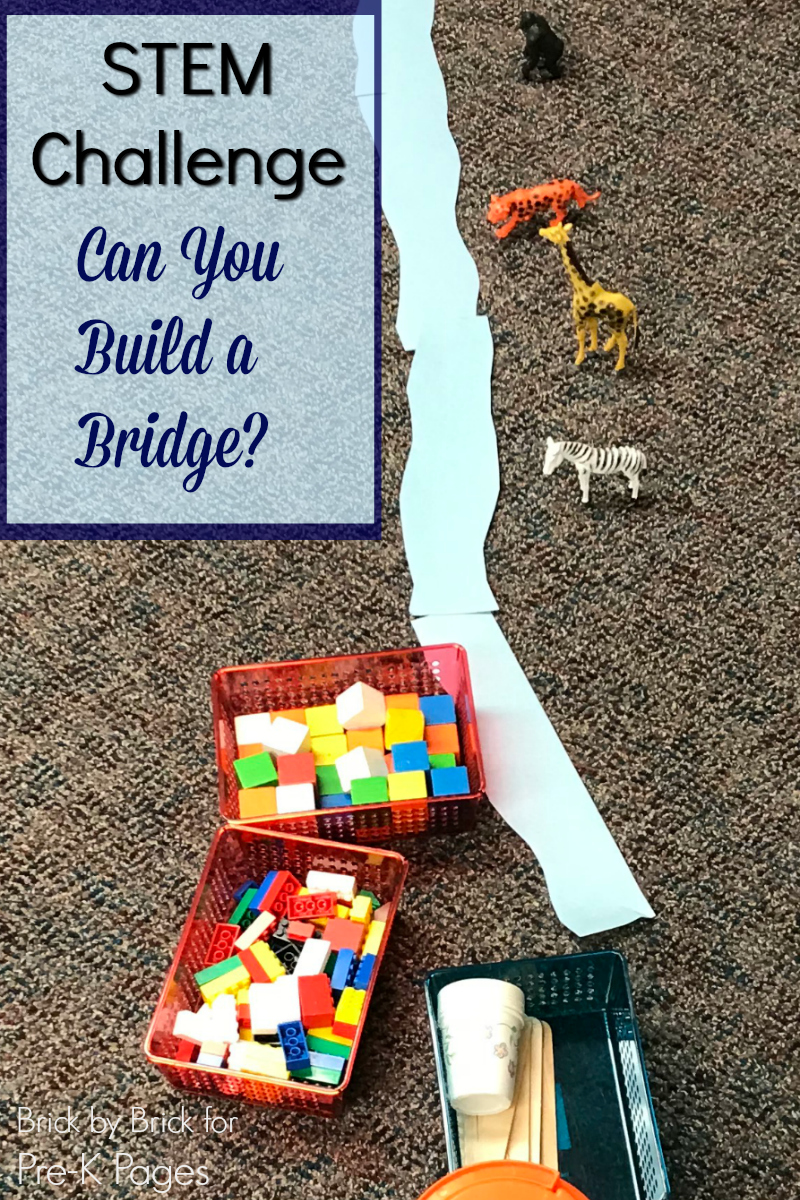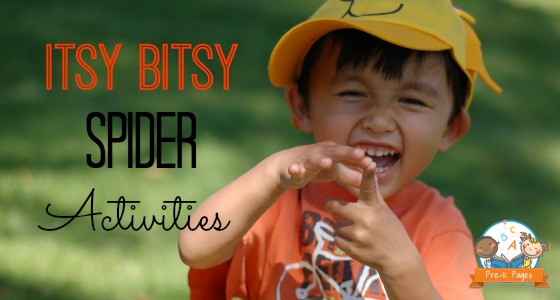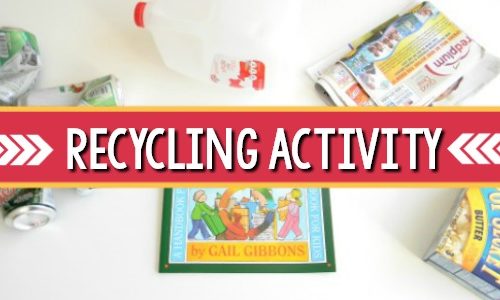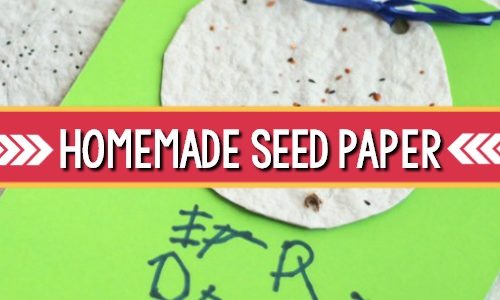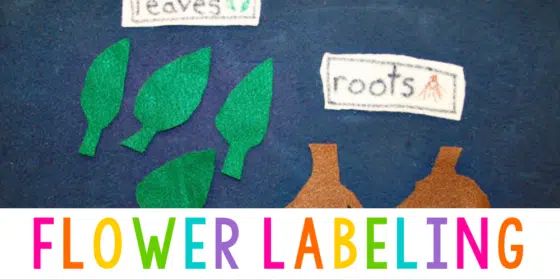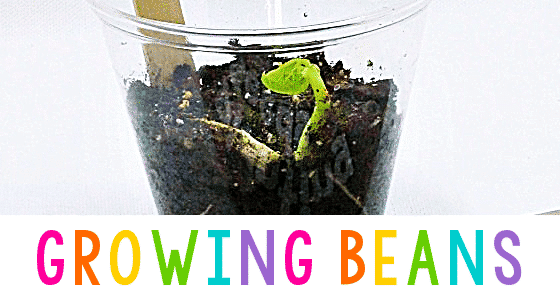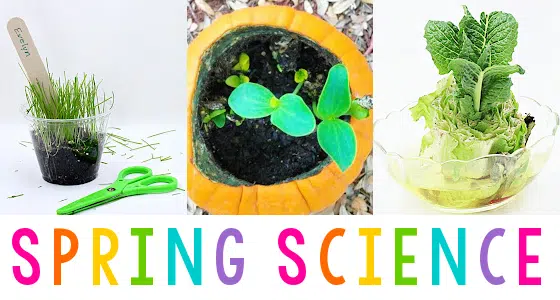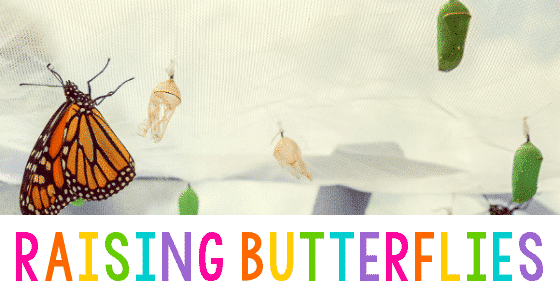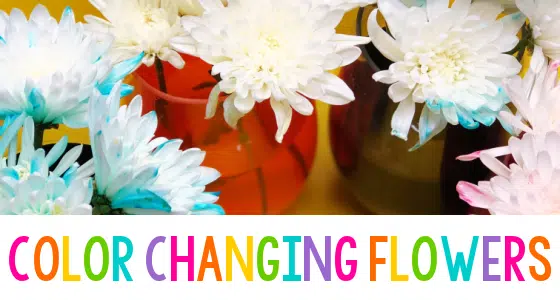STEM stands for science, technology, engineering, and math. (You may also see STEAM, which adds art into the mix.) STEM activities encourage preschoolers to think about problems or ideas and work on ways to solve them. While preschoolers are great thinkers and problem-solvers in every activity and center in the room, teachers can stimulate thinking by presenting specific challenges. Engage your young engineers and scientists with this building activity.
STEM Challenge: How Can You Build a Bridge?
To create a fun STEM building activity, you could bring in some fun and different resources. I’m a “repurpose” teacher, so I’m always looking for ways to use what I have in new ways. For this activity, here are the basics that you need. Use whatever you have or choose for each part.
1. River – something to build the bridge over. We created a river using blue paper strips (cut with wavy lines at the sides). You could also use a length of blue crepe paper or ribbon, a blue piece of fabric bunched into a long tube, or even a narrow container filled with water.
2. Bridge Materials – items to build your bridges. We included wooden cube blocks, small cups, wide craft sticks, and interlocking plastic bricks. You could also use larger wooden or plastic blocks, small boxes or pieces of cardboard, heavyweight paper like cardstock, paint stirrers, and any other construction materials you choose.
3. Bridge Crossers – We included some animals that needed or wanted to cross the river. This is optional but it’s fun to add people, animal figures, or cars as a reason to build a bridge. Also, preschoolers can test their bridges by placing the figures on it and see if it stands or falls. (An important part of science is testing ideas.)
STEM Thinking: What Could You Do?
Arrange the items in a center. Tell the preschoolers: “Can you help the animals cross the river? What could you do?” That’s all the guidance we gave. Our kids are older fives, so they began to try different things. Some worked alone; a few worked together; some added to others’ ideas.
If you have not done these types of activities with your preschoolers before or if your preschoolers are younger, you may need to give some guidance. Let the kids use their own ideas. Ask questions or make statements that stimulate their thinking:
- What do we need to get over the river?
- How could you make that work?
- That does not seem to stand. What could you add?
- I wonder if we could make that taller with something.
You do not need to do a lot of talking and guidance. Once the children begin to explore, step back and let them struggle or experiment. Let things “fail.” Offer a statement or question to expand their thinking when they seem stuck or frustrated. Let the process work as long as the children are working (even if they are repeating the same mistake). Ask them to tell you what they are doing and what they are thinking. If things go in a random direction, let the creativity flow. If they ask for other materials (and those materials are available), provide them to allow kids to try their ideas. I often pull out the masking tape (on request) for kids to try things.
Kids will use the real-world skills of problem-solving and creative thinking throughout their lives. Look for ways to help them begin to practice those skills now.
BIO: Scott Wiley, an early childhood educator for 30 years, is managing editor for Pre-K Pages and now teaches music in a church preschool. His blog Brick by Brick exploring the connection between play and learning. Connect with Scott on Twitter, Facebook, and Pinterest.
More Science Ideas
